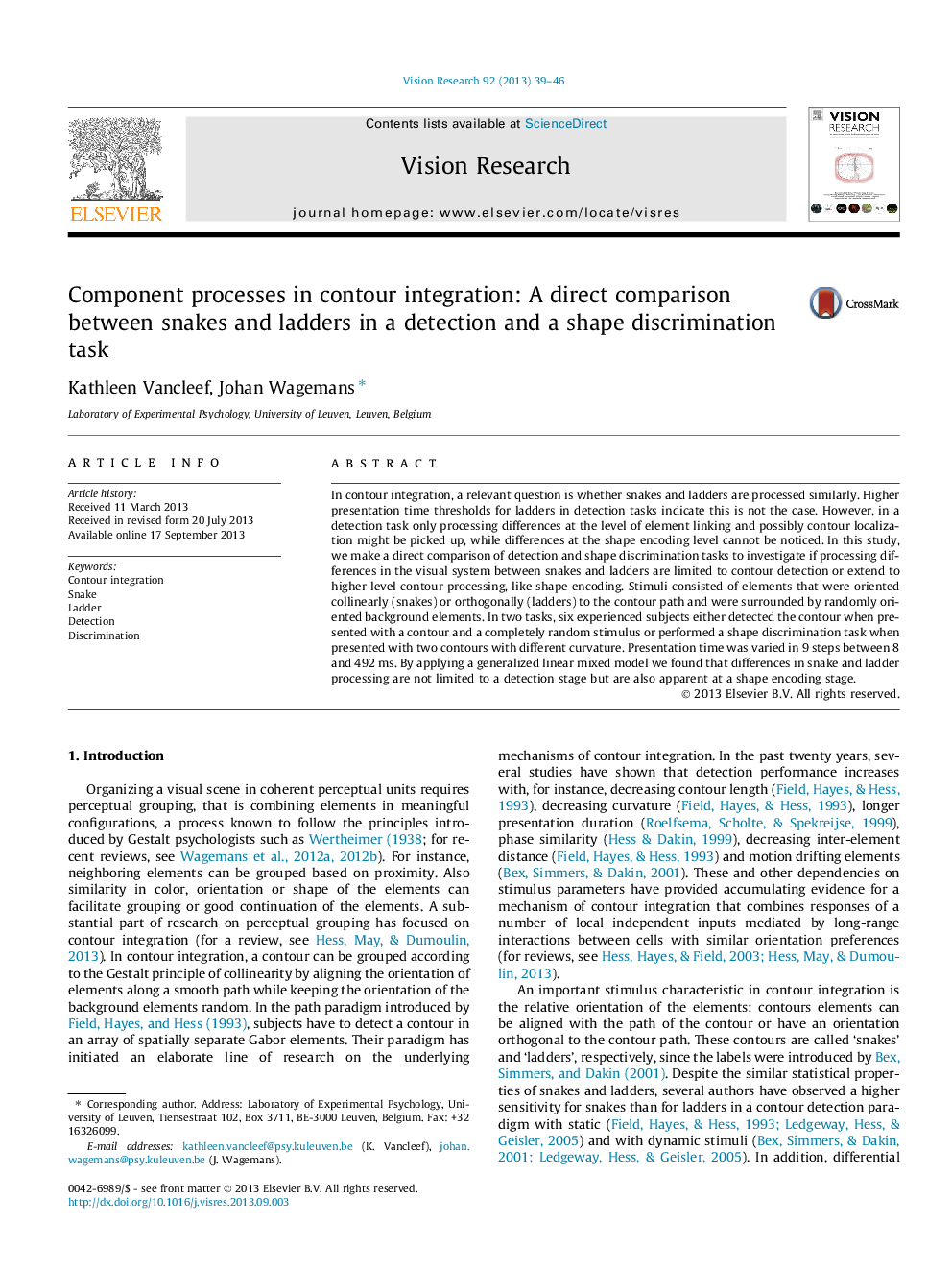| Article ID | Journal | Published Year | Pages | File Type |
|---|---|---|---|---|
| 6203561 | Vision Research | 2013 | 8 Pages |
â¢We directly compared detection and shape discrimination of snakes and ladders.â¢We confirmed previous findings on differences between snake and ladder detection.â¢Our results also indicated differences in shape encoding between snakes and ladders.â¢In addition, smaller curvatures in the contours were easier to detect than larger curvatures.
In contour integration, a relevant question is whether snakes and ladders are processed similarly. Higher presentation time thresholds for ladders in detection tasks indicate this is not the case. However, in a detection task only processing differences at the level of element linking and possibly contour localization might be picked up, while differences at the shape encoding level cannot be noticed. In this study, we make a direct comparison of detection and shape discrimination tasks to investigate if processing differences in the visual system between snakes and ladders are limited to contour detection or extend to higher level contour processing, like shape encoding. Stimuli consisted of elements that were oriented collinearly (snakes) or orthogonally (ladders) to the contour path and were surrounded by randomly oriented background elements. In two tasks, six experienced subjects either detected the contour when presented with a contour and a completely random stimulus or performed a shape discrimination task when presented with two contours with different curvature. Presentation time was varied in 9 steps between 8 and 492Â ms. By applying a generalized linear mixed model we found that differences in snake and ladder processing are not limited to a detection stage but are also apparent at a shape encoding stage.
